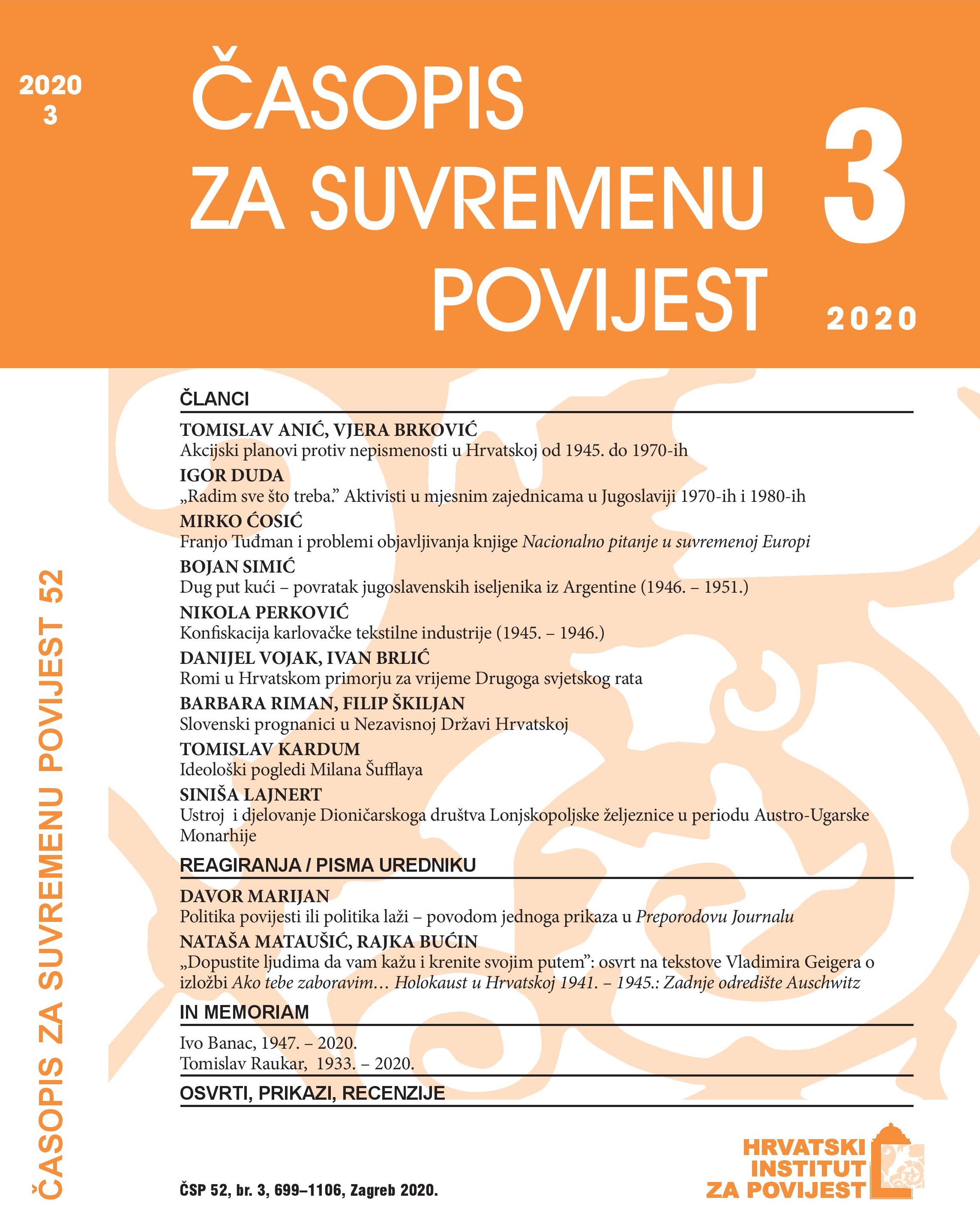Romi u Hrvatskom primorju za vrijeme Drugoga svjetskog rata
The Roma Population in the Croatian Littoral Area during World War II
Author(s): Danijel Vojak, Ivan BrlićSubject(s): WW II and following years (1940 - 1949), Fascism, Nazism and WW II, Ethnic Minorities Studies
Published by: Hrvatski institut za povijest
Keywords: Roma; World War II; Independent State of Croatia; Italy; Fascism; Ustasha; Croatian Littoral;
Summary/Abstract: During World War II, the Roma population in Croatia was exposed to the repression and assimilation policy of several authorities. Ustasha authorities in the Independent State of Croatia persecuted Roma based on racial laws aimed at their genocidal extermination. This paper analyses the position of Roma in some present-day Croatian areas, especially in the Croatian Littoral, which were under Italian (Fascist) rule during the war. Only a few dozen Roma lived in these border areas before the war, who were already subject to the repressive-assimilation policies of the official Italian authorities. This is evidenced by the provisions issued by the aforementioned authorities with the aim of better monitoring the movement of Roma in the Italian–Yugoslav border area. As World War II approached, it was noticeable that the Italian authorities’ relationship with the Roma was intensifying, because they feared, first and foremost, Roma espionage and association with the anti-fascist (communist) resistance movement. The deportation of Roma from the wider Istrian area to internment camps in southern Italy, Sardinia, etc. must be observed in this context. According to other Roma living in the Croatian Littoral, the Italian authorities often sought to control their movements, especially after the establishment of the Independent State of Croatia in April 1941, when attempts were made to reach the Roma in areas under Italian rule. This paper studies the attitude of Croatian anti-fascists towards the Roma. Some tension (conflicts) can be seen in the perception of the indigenous population towards the Roma, in this case in the Omišalj area on the island of Krk. The Roma population managed to survive the war in the Croatian Littoral area, though a considerable number of them died.
Journal: Časopis za suvremenu povijest
- Issue Year: 52/2020
- Issue No: 3
- Page Range: 841-868
- Page Count: 28
- Language: Croatian

